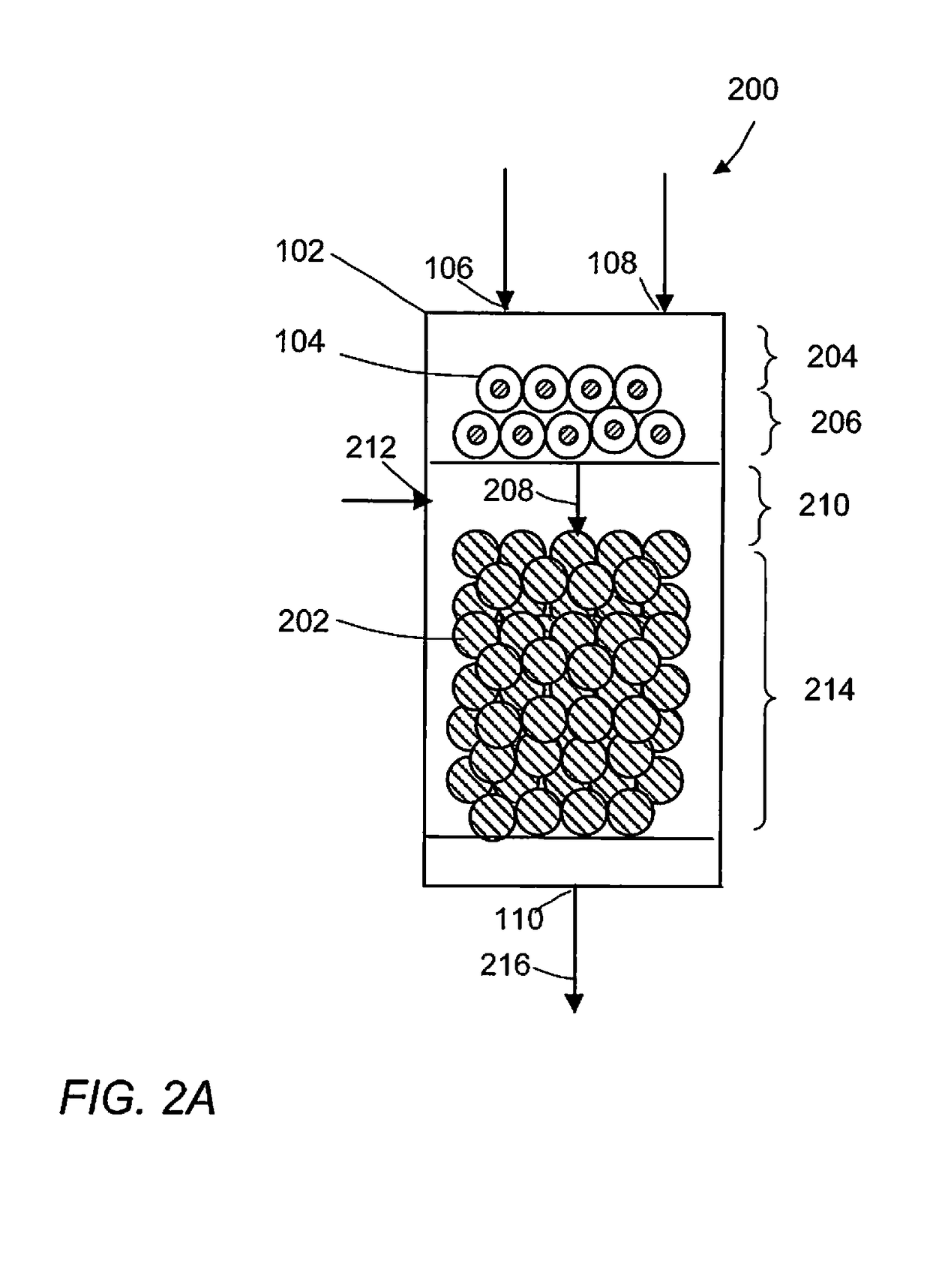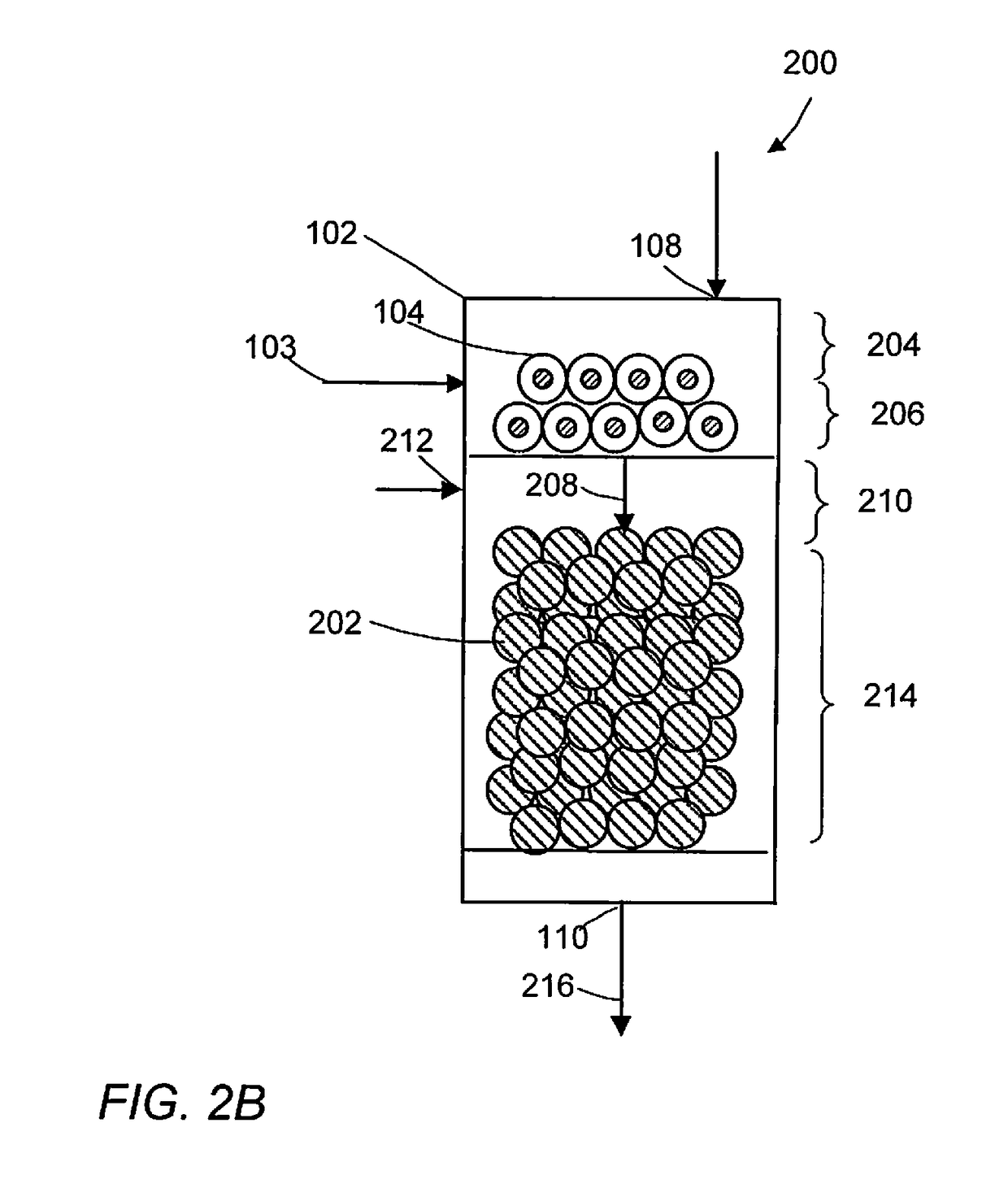Methane oxidative coupling with la-ce catalysts
a technology of oxidative coupling and catalyst, which is applied in the direction of catalyst activation/preparation, metal/metal-oxide/metal-hydroxide catalyst, etc., can solve the problem of difficult oxidative conversion to form ethylene, no process has been successfully commercialized, and high reaction temperature required to make the reaction proceed, etc. problem, to achieve the effect of high selectivity and more energy efficient process
- Summary
- Abstract
- Description
- Claims
- Application Information
AI Technical Summary
Benefits of technology
Problems solved by technology
Method used
Image
Examples
example 1
Synthesis of Catalysts
[0054]All materials for the synthesis of the bulk metal oxide catalysts were obtained from Sigma Aldrich Chemical Company (St. Louis, Mo., USA).
[0055]Bulk Metal Oxide Catalyst.
[0056]Lanthanum nitrate (La(NO3)3) and cerium nitrate (Ce(NO3)3) in the molar ratios shown below in Table 1 were dissolved in de-ionized water under agitation. Then the mixture was dried at 125° C. overnight. The dried material was then calcined at 625° C. for 5 hours at a ramp rate of 1° C. per minute. FIG. 3 is an X-Ray Diffraction (XRD) patterns of bulk metal oxide catalyst of the present invention (sample 3 in Table 1) showing the La(OH)3 phase. The upside down triangle indicates the peaks attributable to the La(OH)3. As shown in FIG. 3, the La(OH)3 phase is the dominant phase in the catalyst. FIG. 4 is an X-Ray Diffraction (XRD) patterns of Sample 5 which did not include the La(OH)3 phase.
TABLE 1SampleLa / CePresence of La(OH)3No.(Molar Ratio)Crystal Phase110yes230yes315yes47yes51no
example 2
[0057]A fixed bed catalyst reactor was filled with a catalytic material of Example 1 (10 mg). The reactor was heated to the required temperature, and a mixture of methane (CH4) and oxygen (O2) at a fixed CH4:O2 ratio of 7.4 was fed to the reactor at a flow rate of 80 sccm. The ignition temperature, methane conversion, oxygen conversion and selectivity to C2+ products under 500° C. for each sample are listed in Table 2. Methane conversion was calculated on the basis of difference of inlet and outlet concentrations of methane. Selectivity was calculated on the basis of concentrations of C2+ products in comparison all the converted amount of methane. From analysis of the data, it was concluded that the catalysts containing La(OH)3 crystal phase showed higher C2+ selectivity than the catalyst without the La(OH)3 crystal phase.
TABLE 2IgnitionSampleTemperature,O2CH4C2+No.° C.Conversion, %Conversion, %Selectivity, %150098.815.567.0245078.214.263.1350092.115.662...
example 3
Oxidative Coupling of Methane with Second Catalyst
[0059]A fixed bed catalyst reactor was filled with a supported catalyst (100 mg, MnNa2WO4 / SiO2). The reactor was heated to the required temperature and methane and oxygen was fed to the reactor at a flow rate of 33.3 sccm. The CH4:O2 ratio, methane conversion, oxygen conversion and with selectivity to C2+ products for each sample is listed in Table 3. Methane conversion was calculated on the basis of difference of inlet and outlet concentrations of methane. Selectivity was calculated on the basis of concentrations of C2+ products in comparison all the converted amount of methane.
TABLE 3ReactionSampleCH4:O2Temperature,O2 Con-CH4 Con-C2+No.ratio° C.version, %version, %Selectivity, %64.075010030.473.377.480010018.879.8
From analysis of the data in Table 3, the selectivities with the second catalyst in the presence of oxygen were determined to be higher than those obtained from the catalysts used in Example 2.
PUM
| Property | Measurement | Unit |
|---|---|---|
| temperature | aaaaa | aaaaa |
| temperature | aaaaa | aaaaa |
| temperature | aaaaa | aaaaa |
Abstract
Description
Claims
Application Information
 Login to View More
Login to View More - R&D
- Intellectual Property
- Life Sciences
- Materials
- Tech Scout
- Unparalleled Data Quality
- Higher Quality Content
- 60% Fewer Hallucinations
Browse by: Latest US Patents, China's latest patents, Technical Efficacy Thesaurus, Application Domain, Technology Topic, Popular Technical Reports.
© 2025 PatSnap. All rights reserved.Legal|Privacy policy|Modern Slavery Act Transparency Statement|Sitemap|About US| Contact US: help@patsnap.com



